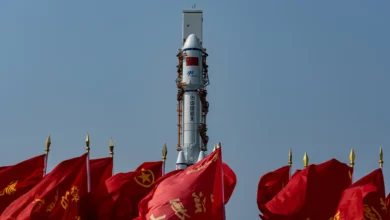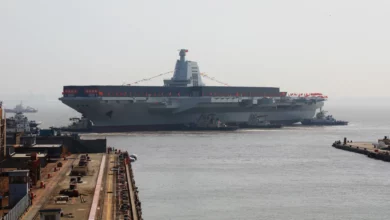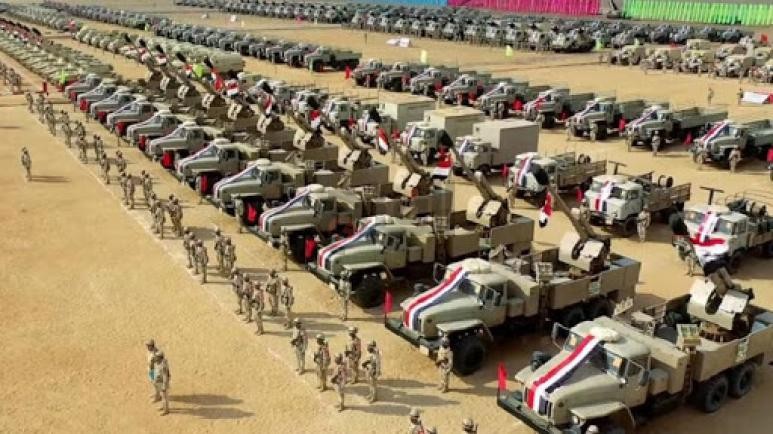There are two possible entrances to the National Military Museum. The first is a wide marble walkway, bisected by an imposing bronze statue of Khedive Ismail, pointing from atop his muscular steed. As an introduction to the museum, this pathway is elegant, understated and closed for renovations, forcing visitors to take a temporary side corridor, lined with souvenir shops, concession stands and face-painting booths. With this strip of commercial gaudiness directly adjacent to the Khedive’s lustrous courtyard, it’s hard not to approach the museum with a sense of frustration, if not reluctance.
Rows of busts and a plaque celebrating Hosni Mubarak’s camaraderie with former North Korean dictator Kim Il-Sung (the Military Museum was built as “a symbol of the mutual cooperation between the two friendly countries”) are barely noticeable amongst the stretch of vending machines and booths selling all sorts of random junk. While this will all be familiar to anyone who’s been to the October War Panorama, it still begs the simple but seemingly unanswerable question, “Why?”
This can be further broken down into an endless list of smaller but no less frustrating queries, including: Who goes to a war museum to get their face painted like a tiger or purchase a postcard printout of their favorite wrestler or Bollywood actress? Who, but the most confused of tourists, would even consider buying a fake shrunken head or a tie-dyed marijuana-themed outfit bearing phrases like Lion of Judah and Jah Rastafari? How difficult is it, really, to spell words like “military,” “sword,” and “General”? And so on.
Even putting these quibbles aside, the Military Museum will be a harsh letdown for anyone even mildly interested in the topic. Roughly half of the wings are cordoned off, the chronology of the exhibitions is disorienting, and the “informational” material is mostly indecipherable. But worst of all is how childish the museum makes the nation’s entire military history seem. The main entrance is guarded by a chunky statue of a cheerful soldier brandishing a rifle with one hand while making a peace sign with the other, over the inscription: “The Best Soldier on Earth.” A few paces later, this supreme warrior’s reputation is shattered by an even larger statue of an anonymous Islamic era combatant, definitively labeled “The Best Soldier in the World.”
The main lobby is a morbid affair; a dimly lit room with life-size replicas of four horsemen on one side, and a raft full of soldiers on the other, adjacent to a plaque reading, “Thy are instruggle till the judement day.” By far the most brightly-lit display, the far wall is dominated by a truly nauseating mural of Mubarak being celebrated by a crowd of Egyptian stereotypes. The lobby leads off to a series of rooms and hallways, all displaying a variety of weapons, maps and photographs, depicting all major military operations and conquests from the Pharaohs to the Islamic Era, and into contemporary times. Many of these artifacts are real, but the shodinnes of the overall presentation detracts from them.
With no tour guides or anyone willing or capable of giving reliable information, the only emotion stirred by any of the exhibitions is indifference, which, by the time visitors reach the twentieth or so display room, will likely have soured into aggressive boredom. Aside from a charred chunk of an Israeli fighter jet wing and a collection of early French coins, the latter section of the museum is mostly populated by oil paintings and wood carvings, polished to the point of looking, more than anything, like chocolate.
The majority of the models are lopsided and carelessly painted, the images blurry (except the ones that are pure propaganda), and some of the exhibitions are just weird, such as the Military Uniforms wing, with its displays of awkwardly-posed mannequins or samples from the sophisticated wardrobe of Moh med li P sh (based on the vast majority of its signs, curators seem to have run out of ‘a’ stickers shortly after work on this wing began—probably because they wasted them all on signs like “intelegance department”).
Staying true to the nature of the Egyptian military, the rules of the museum seem to be governed by paranoia, and confusion. Linger too long at a display, and you’ll find yourself joined by a silent, but scrutinizing official. Cameras are allowed, but any actual photography is treated with the utmost suspicion. After buying a ticket for the camera (LE1 for digital, LE20 for video), this reporter was asked by an official if he was planning on taking any pictures. An honest answer led to several more questions, a lengthy argument, and a call to the “head of museum security,” who was in a good enough mood to grant his approval. This probably would not have been the case had I admitted to being a reporter. On a few occasions, the clicking of my camera was still met with tsks of disapproval, even though the flash was off.
Given its location at the Cairo Citadel, the most impressive aspect of the National Military Museum is its architecture, although inside the museum itself is in no way the best place to appreciate it. Unless caught in a sudden rain or sandstorm, there’s really no reason to spoil a trip to the citadel by visiting the National Military Museum. It’s strange that an institution that has forever thrived on propaganda can still be so bad at it.




